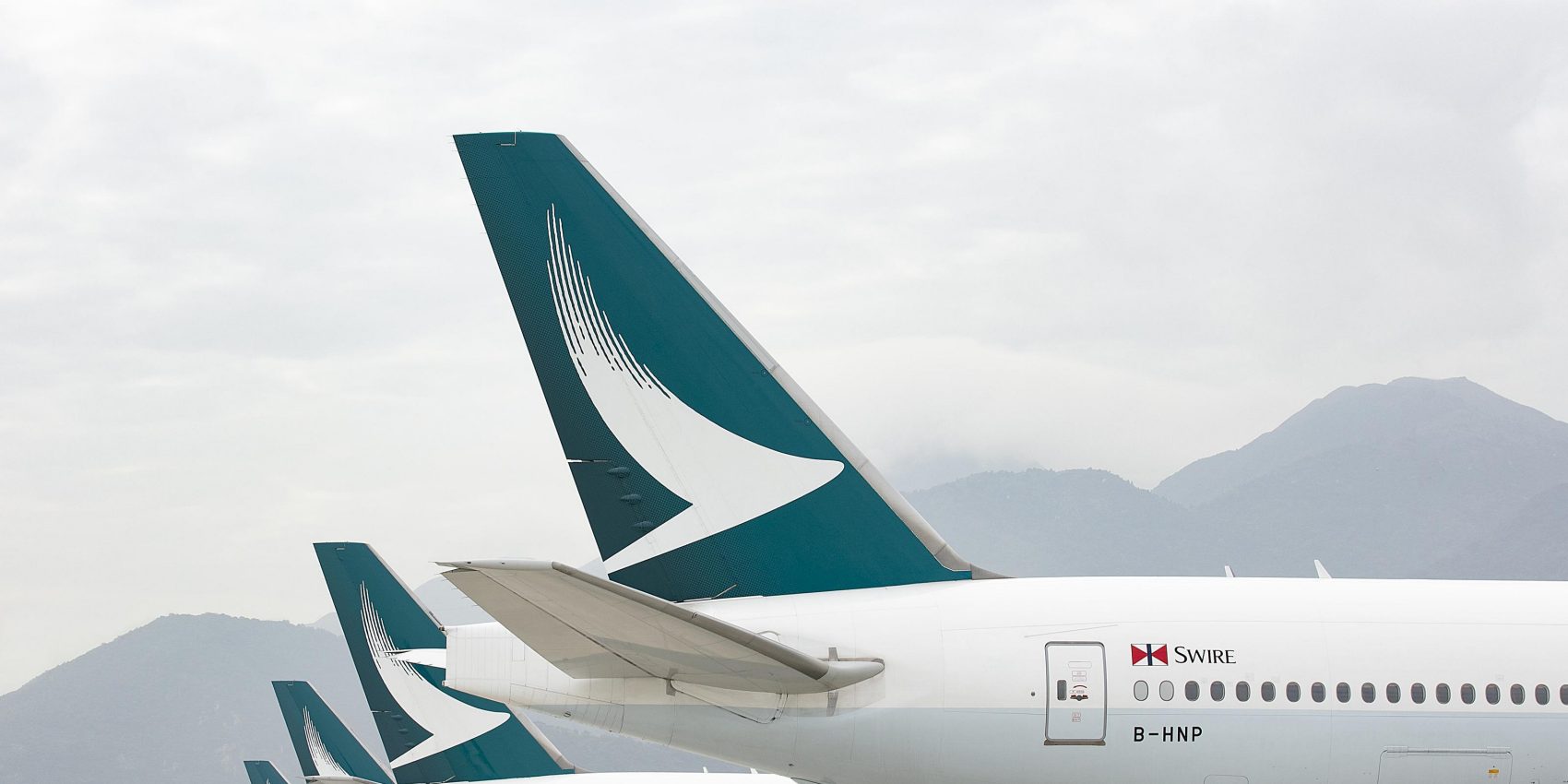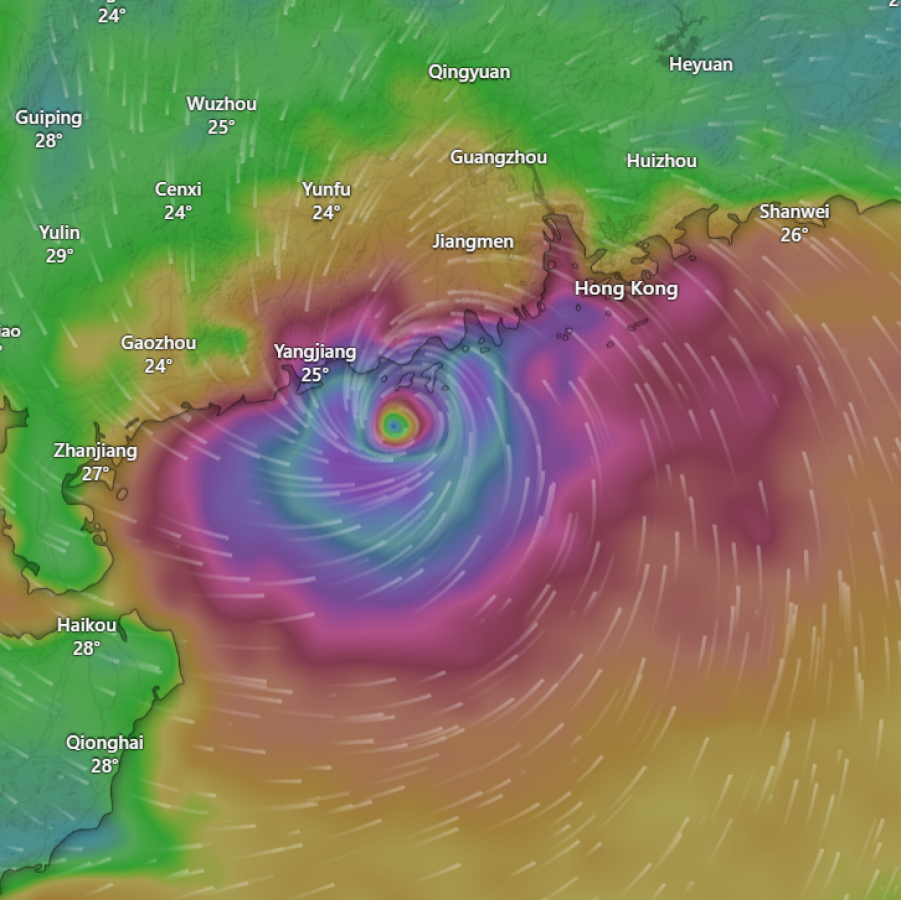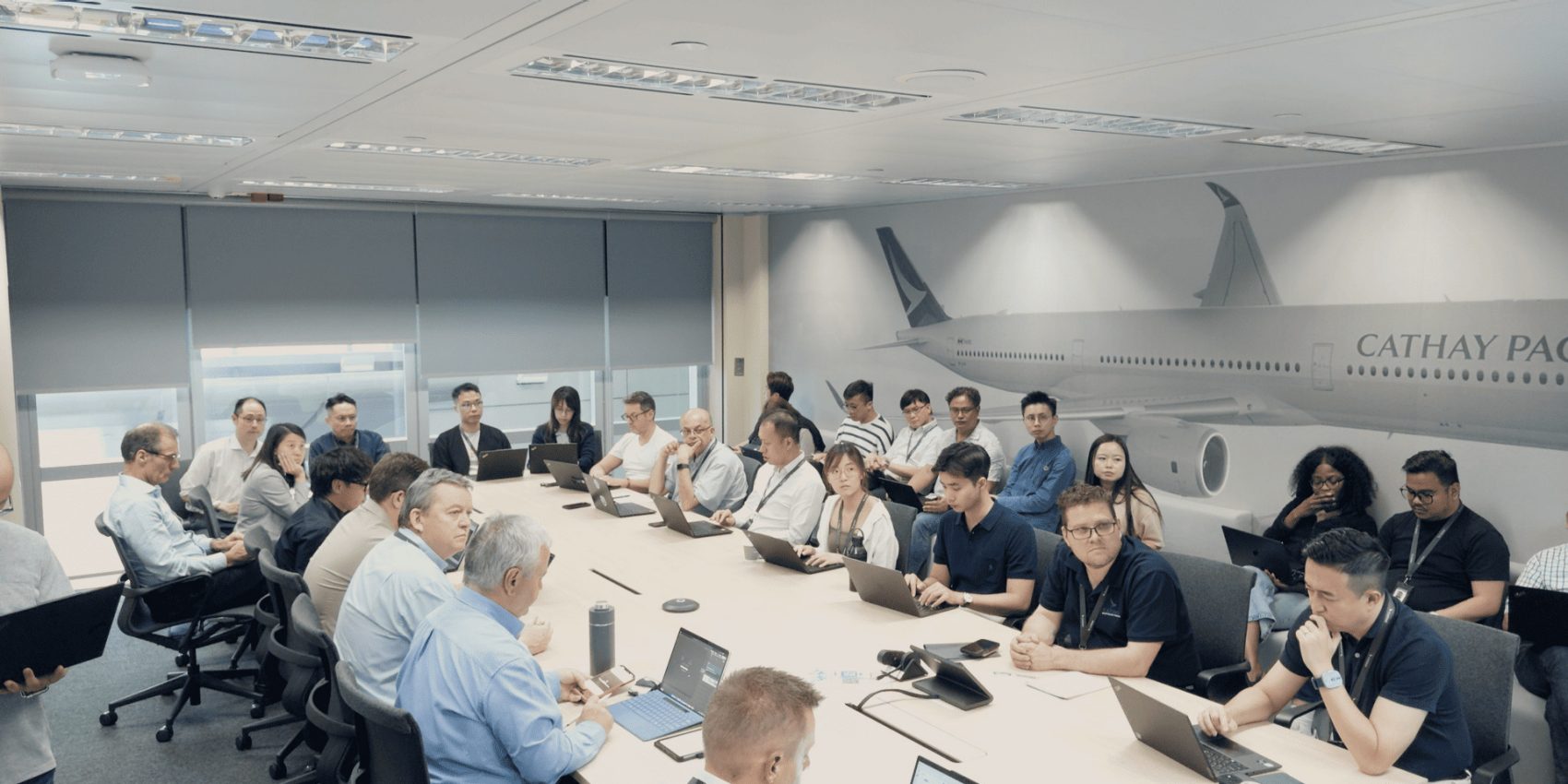Typhoon Ragasa: Cathay Pacific's liveblog from the Operations Centre

Welcome to our Typhoon Ragasa liveblog, coming to you straight from Cathay Pacific’s Integrated Operations Centre (IOC) in the heart of Cathay City. We’ll be bringing you regular updates as we work to keep our passengers, our people and our planes safe.
Thursday, 25 September: 11:30am
It’s the morning after the day before. You might not know Typhoon Ragasa had been here, but for some uncleared debris in the streets of Hong Kong and scudding grey clouds through which – finally – aircraft are flying.
Cathay Pacific’s long-haul flights full of passengers from the Americas, Europe and Australia all arrived safely this early morning, and are being turned around ready for today’s departures. The majority of the aircraft flown overseas to protect them during the storm have returned too, ready to carry passengers onwards.
That said, the full recovery will not be immediate. Since 6am, Hong Kong International Airport has been operating its FRCS (Flight Rescheduling Control System), which limits arrivals and departures until the airport is certain that it can handle the volume of aircraft and passengers. This means airlines must submit “slot requests” for departures. Cathay Pacific, as home carrier, has around a third of this allocation, and the FRCS will relax as capacity and capability returns.
There may be some remaining cancellations, especially for higher frequency regional services, and some planned delays – all of which are necessary to get everything in place for what’s anticipated to be fully normal operations tomorrow.
In the IOC meeting room, Captain Jon Toller, General Manager IOC, thanks all departments for their hard work and planning. There will be wash-up to see if there are opportunities for improvement – “but the outcome shows just how well how prepared we were,” he tells the room.
For our passengers in Hong Kong and across the world, it’s been a time of uncertainty and frustration. But from the IOC, we’ve been able to protect our fleet, “reprotect” some 85,000 people – rerouting, rebooking and refunding them within a day – and established a solid plan that prevented thousands more from experiencing that disappointment today.
That’s me signing off from the IOC and the final few gusts of Typhoon Ragasa, in hopes that the next typhoon to hit Hong Kong won’t be as severe.
But if it is, the IOC will be ready.

Wednesday, 24 September: 6pm
It’s evening, and the IOC has met for the last time today. There is a sense of optimistic deflation, in a less crowded room. “It’s been like being in the eye of a typhoon,” laughs Captain Jon Toller, General Manager IOC. “We’ve been smacked around and we’re tired, but aware that it’s coming back to smack us in the morning when the recovery starts. But we have a plan, and it’s a good plan – but we need to be ready.”
The pieces are in place. Typhoon Ragasa is some 200 kilometres west of the city and weakening as it makes landfall. But there are still gusts in its tail, and so the Flight Operations team wants any returning ferry flights – those without passengers – to arrive after 3am on Thursday to minimise the chances of windshear on landing – but ahead of the 6am operations restart that will limit the “flow rate” of how many aircraft can land.
All the other signs are positive. Already this afternoon, Engineering teams have inspected the Cathay Pacific planes parked at the airport. All have come through the storm unscathed. Additionally, there is no infrastructural damage at the airport or to any equipment that will be needed in the morning.
And at last – there are aircraft in the air.
Eight of the ultra-long-haul flights from the US are en route, now filled with passengers, and slated to arrive around 6am tomorrow local time. The flights from Europe and Australia are departing shortly, to arrive between 6am and 8am. Around a dozen of the remaining evacuated aircraft are set to return at around 6am, with more to follow across the day as limitations are lifted.
While tomorrow will see an airport and an airline gradually returning to normality, by Friday it should be business as usual. We’re approaching the final test – and tomorrow, we’ll know how we did.

Wednesday, 24 September: 4pm
It’s mid-afternoon in the IOC, and there is a buzz in the air. The typhoon signal has been lowered to T8, ahead of expectations. This is good news, not just for a city that’s taken quite the battering, but also because it means the city’s public transportation system will resume quicker – allowing essential personnel to get to the airport.
How does the restart happen? Well, first you need to have had a successful shutdown. “The biggest consideration is working out how you are going to move the airplanes into position for the restart,” says Head of the IOC Andrew Baird.
Since the last big typhoon, Mangkhut in 2018, there has been a steady investment in new technology in the IOC: the centrepiece of which is Sentry, a data tool which has been central to the decision-making for the shutdown and the resumption.
“It’s a tool that enables us to shut down or rebuild the schedule quickly, factoring in all our considerations,” says Captain Jon Toller, General Manager IOC. “This is the first time we’ve really taken the training wheels off and put it into action. It’s an incredibly sophisticated system and enables us to run scenarios for us to check off manually with stakeholders.”
What once took hours can now take minutes: these scenarios take about 15 minutes to run. “What we’re doing now is building scenarios where it recommends which flights to operate tomorrow morning from 6am, under the limitations imposed while the airport rebuilds its capacity.”
The recovery starts here – and thanks to Sentry, it will be faster than ever before.

Wednesday, 24 September: 1pm
It’s coming up to lunchtime in the IOC. The shift changed a few hours previously. The whole team is staying in the Headland, the crew hotel at Cathay City, along with other vital staff and operating crews – so that everyone is ready for the resumption. No one seems fazed by a windy night in unfamiliar surroundings.

Credit: Windy.com
Across the way at Hong Kong International Airport, there’s not much activity other than that same howling wind. In the airport’s most sheltered areas, a number of Cathay Pacific planes are hunkered down to wait out the storm with a little extra fuel on board, to keep them as stable as possible.
“The long-haul aircraft are loaded with about 65 tonnes of fuel,” Head of Line Operations Captain James Toye tells me. These aircraft will be needed for the first departures when airline operations spin back into life tomorrow. Some planes on regional flights will need de-fuelling, so they’re not too heavily loaded for their flights.
But what about the rest of our aircraft? Around half the fleet are waiting out the storm at the destinations they last flew to, ready to be called back with full passenger loads. Of the aircraft that would otherwise have been here, some have flown empty to airports around South East Asia and the Chinese Mainland, out of harm’s way. The same crew who flew them out are set to bring them back in the early hours, before the official lifting of the “no operations window”.
Here in the quietly thrumming Integrated Operations Centre, everything’s gone to plan – for now. But the waiting game continues, as Ragasa inches past Hong Kong – so we can press go on the recovery.
Wednesday, 24 September: 10am
Happy birthday, Cathay Pacific – 79 today. But today is not the celebration that anyone would have expected – currently not a single one of our planes is flying. The earliest a Brushwing will be in the skies over Hong Kong is sometime on Thursday.
The reason is simple. Super Typhoon Ragasa, which is currently lashing Hong Kong with hurricane-force winds.
Ragasa was anticipated to be bigger and more powerful than 2018’s Typhoon Mangkhut, which caused severe devastation.
Out of an abundance of caution, and with plenty of experience of Hong Kong’s turbulent weather, Cathay Pacific’s Flight Operations team started analysing the storm. “Tuesday and Wednesday were the days of concern for us,” Head of Line Operations Captain James Toye tells me. “It was a massive storm system, and something of a shotgun blast: wherever it ended up hitting would be bad for us.”

The Integrated Operations Centre (IOC), where I’m sitting now, is the pulsing brain that manages Cathay Pacific flights on the day of operation and three days out. It met on Sunday to assess the potential impacts on the airline and, of course, on customers. It was inevitable that there would be a suspension in flying but it was too early to decide when that would be.
The team decided to try something new, and announced a waiver on fees to rebook and reroute travel over the affected midweek period. This, with additional support from the Global Call Centres, led to around 10,000 potentially affected passengers changing their plans.
“Most people appreciate the ability to look after themselves quickly,” says Josh Rogers, Head of Airport Service Delivery. “It’s really vital that customers make sure that their contact details are on their booking, particularly those who book through agents.”
And it significantly lessened the workload of “re-protecting” – making alternative booking arrangements – for the many more who would be impacted by the inevitable cancellations in the week.



By Monday, following the second IOC meeting and further analysis of Ragasa, the IOC opted for a 36-hour “no operations window” – a suspension on flying. Hong Kong International Airport essentially closed last night at 6pm, although a Cathay Pacific service from Singapore, the last of the day, snuck in just before 9pm. Hong Kong International Airport remains effectively closed today and will not open for normal passenger service until at least 6am tomorrow.
Around 560 flights have had to be cancelled, temporarily dashing the travel plans of around 85,000 customers around the globe. While this is not the birthday that Cathay wanted, a look outside the window shows the potential for damage and injury from Typhoon Ragasa – and so safety has to come first.
For now, the IOC has completed its morning meeting, and the team will start running scenarios to enable the most optimised resumption of operations. There are eight ultra-long-hauls parked at distant destinations that have been cleared to prepare for flight, and we expect them in Hong Kong early tomorrow morning. Now it’s a case of making sure that Cathay Pacific weathers the storm, and gets planes back in the skies as soon as possible.
More inspiration
- China – the Chinese Mainland, Hong Kong SAR, Macao SAR and Taiwan Region
- Hong Kong SAR - English
- Chinese Mainland (China) - English
- Taiwan, China - English
- 香港特別行政區 - 繁體中文
- 中国內地 - 简体中文
- 中國台灣 - 繁體中文
- Africa
- South Africa - English
- Americas
- Canada - English
- Canada - Français
- United States - English
- Asia
- Bangladesh - English
- Korea - English
- Singapore - English
- Cambodia - English
- 한국 - 한국어
- Sri Lanka - English
- India - English
- Malaysia - English
- Thailand - English
- Indonesia - English
- Maldives - English
- ประเทศไทย - ภาษาไทย
- Indonesia - Bahasa Indonesia
- Myanmar - English
- Vietnam - English
- Japan - English
- Nepal - English
- Việt Nam - tiếng Việt
- 日本 - 日本語
- Philippines - English
- Australasia
- Australia - English
- New Zealand - English








